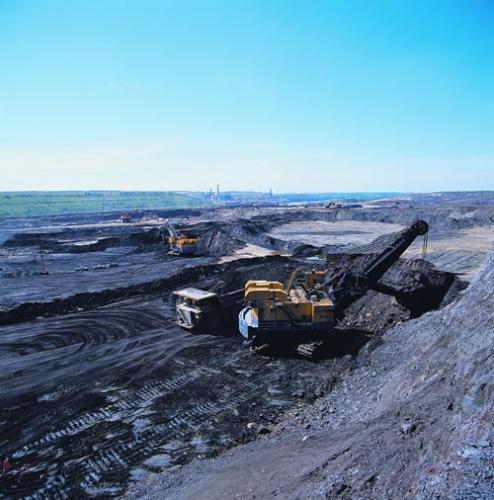 Linking Mongolia”s desert mines
Linking Mongolia”s desert mines
with foreign clients will require billions of dollars of investment over a
decade and some investors fear suspicion of China, rather than pure economic logic,
is shaping its plans, Reuters says in an analytical report. Deputy Minister of
Transportation A. Gansukh has said that the country would need to spend USD8.8
billion to build 5,600 km of critical railway infrastructure over the next few
years to deliver its surging mineral output to foreign markets.
Analysts say the country”s
dependence on its powerful and resource-hungry neighbor China worries policy
makers. So instead of building a direct route south, it has chosen a more
circuitous and expensive option that will connect its mines to Russia and the
Pacific via a huge new industrial park aimed at adding value to its mineral
reserves.
Graeme Hancock, senior mining specialist with the
World Bank, says overdependence on China was a concern but the difference
between a 1,500-km trip to a Chinese port and a 4,500-km trip to the Russian
Far East was considerable. “If you can make a margin of USD70 a ton
selling through China or USD5 a ton selling through Russia, which would you do?
You have to look at the economic fundamentals. Sacrificing commercial value for
a political objective needs to be very carefully weighed.”
The southern Gobi desert, close
to the Chinese border, is home to what many regard as the world”s biggest untapped
copper deposit at Oyutolgoi and the biggest coking coal mine at Tavantolgoi —
capable of producing 50 million tons per annum. China offers a guaranteed
market for both.
Three quarters of Mongolia”s
exports went to China in 2009, with millions of tons of coal heading south
through an already overwhelmed rail link, and foreign investors say their
future could depend on easing the bottleneck. Peter Geerdts, geologist with
Gobi Coal and Energy, which owns mines in Mongolia”s southwest, said his
company would initially use trucks to ship 2 million tons of coal a year to
China”s northwestern regions of Gansu and Xinjiang, but once output reaches 10
million tons, that will not be feasible. “We will really need the
railway,” he said.
Mongolia eventually plans to
build a rail route crossing the country from west to east, but Gansukh said it
was unclear when construction on the western section of the project would
begin. Mongolia first wants to ease its dependence on China and seek out other
options — which inevitably involve Russia.
In June, Mongolia”s Parliament
said priority would be given to a rail link from the Tavantolgoi project to an
as yet uncompleted industrial park in Sainshand, where it can be processed and
shipped north to Russia. Foreign mine investors expressed worry at the decision,
saying it made little economic sense and had no funding.
According to a World Bank
report, shipment costs via a rail link to the Chinese city of Baotou would
stand at USD33 per ton, but it would cost USD95 to transport it to the Russian
border. The decision was made even though private financing had been made
available for a 270-km route from Tavantolgoi to the border with China. That
project has been consigned to the second phase.
Gansukh said discounts had
already been negotiated with Russia”s rail network, and the Pacific option
could even be cheaper than the route to China”s ports. “Mining companies
are saying it is too expensive, but we are arranging it so it is not so
expensive,” he said. “We have negotiated with Russian Railways and
they have already given us a 65 percent discount.” He said after the
concessions are granted, the cost of delivering a ton of coal to Russia”s far
eastern coast would stand at USD27, compared to USD35 to the Chinese port of
Tianjin.
He said financing the project
would also be straightforward. “We”re going to set up a joint venture, and
we are already negotiating with two big potential investors in South
Korea.”
Much of the discussion has also
concerned the rail gauge to be used in Mongolia. Russia was believed to be putting
pressure on Mongolia to use its own unique broad gauge system even though China
and the rest of the world use a narrower one. Gansukh said Mongolia had no
choice but to work with the existing infrastructure, which was built by the
Russians. “If we bring in the narrow gauge then it won”t be integrated
with the rest of our network,” he said.
Jim Reichert, infrastructure
expert with the World Bank in Ulaanbaatar, said Mongolia”s resources were
likely to go where the demand is, and the China option would probably prevail
in the end. “The view here at Tavantolgoi is that they are going to need
the route to the south,” he said. “The border crossing can”t handle
what they”ve got already and if you start putting 20 million tons of coal
through there, that could force the issue.”
 3,575.44
3,575.44







